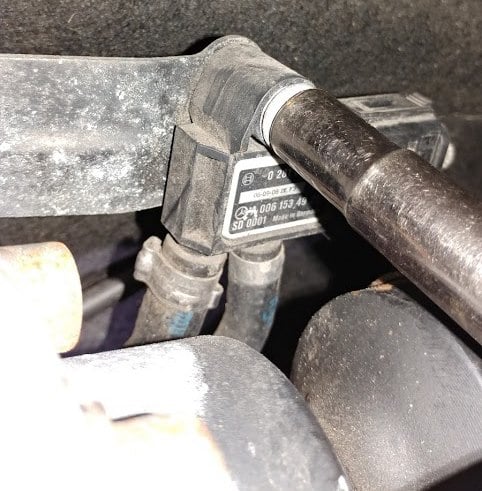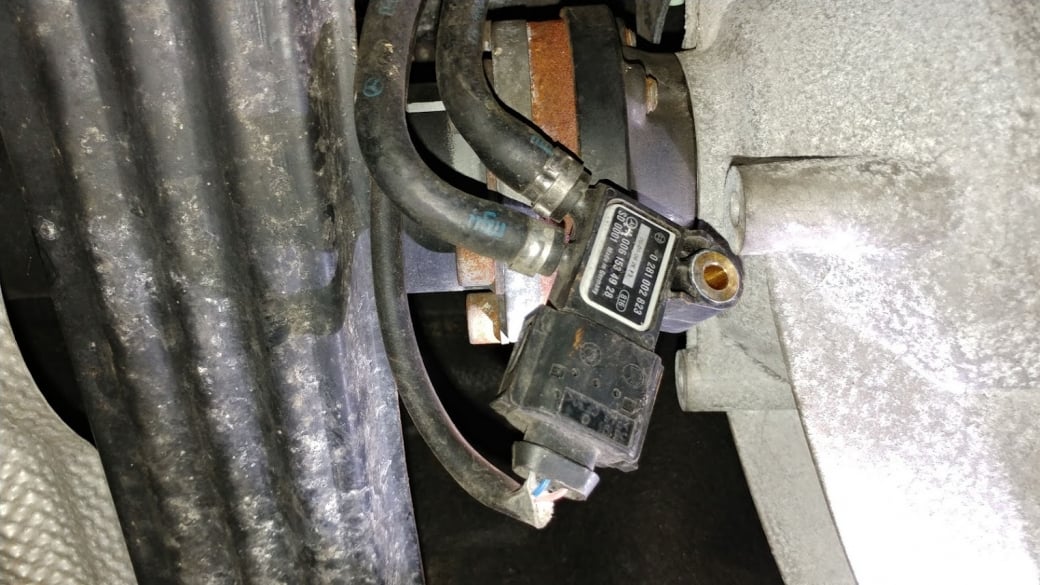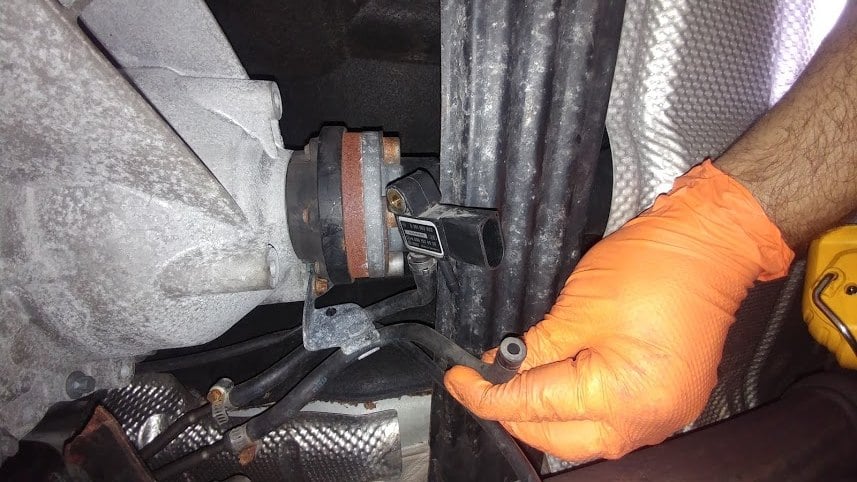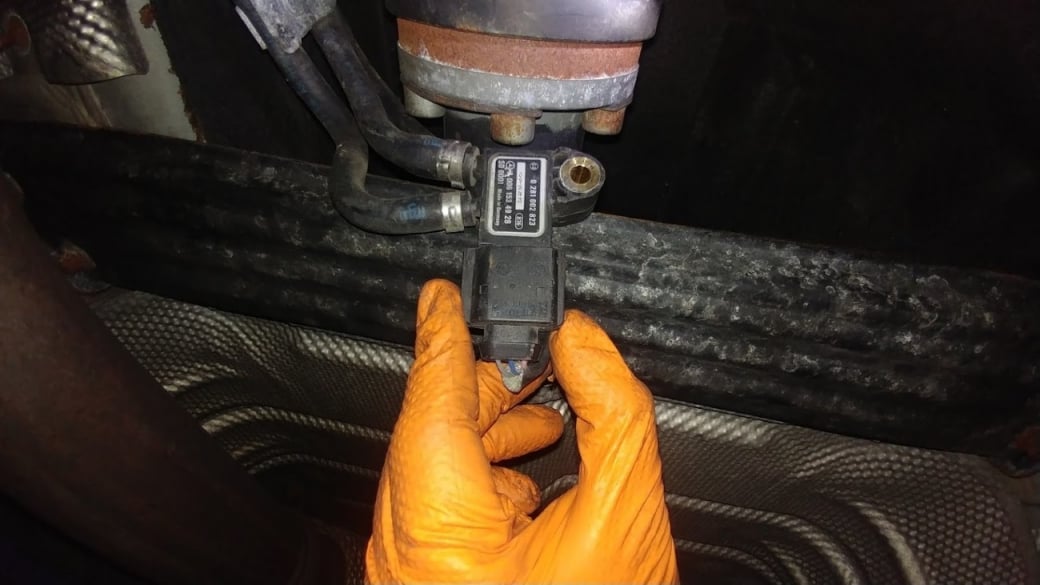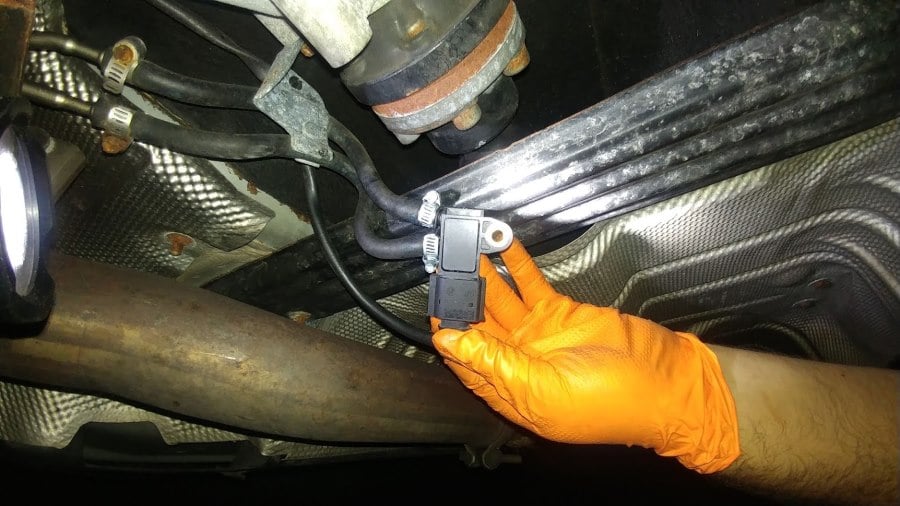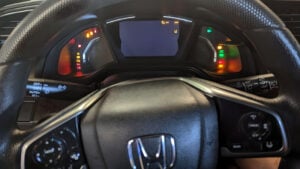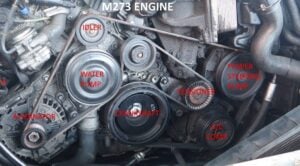Mercedes DPF Exhaust Pressure Sensor Problem P1402 Code 2078
This past week, we fixed fault code P1402 on a Mercedes-Benz with a diesel engine. We wanted to share the solution because this problem seems to affect many Mercedes-Benz Sprinter, E, GL, ML, and R Class models with diesel engines.
This problem is often caused by a faulty Pressure Differential Sensor DPS (Part Number A6429050100 ) for the Diesel Particulate Filter (DPF). Replacing the pressure differential sensor takes approximately 30 minutes.
This is a list of the symptoms that the owner was experiencing.
Symptoms
- Check Engine Light on
- Reduced engine power
- Vehicle slow to accelerate / Limp Mode
- Fault Code P1402
After diagnosing the car with a YOCUANIC Full System OBD-II scanner, we found the following code.
- Code 2078-008: Check Component B28/8 (Pressure differential sensor DPF). Plausibility error with the ignition on.
In addition to the check engine light, you will notice that your Mercedes struggles to accelerate. The boost is turned off, and you drive without the turbo’s help. Also, the ECU restricts maximum RPMs.
The car still changes gears but is very slow to accelerate, which can be dangerous. This is not the same as the limp home mode, where the vehicle gets stuck in second gear. Replacing the DPF sensor will most likely fix the P1402 and slow acceleration problem. The DPF sensor is near the particle filter above the transfer case. It can be accessed from under the vehicle.
How to replace the Mercedes-Benz DPF sensor?
Drive the front (or rear) of the vehicle up on ramps. It doesn’t matter if you get the front or back up on ramps. The sensor is located approximately in the middle of the vehicle. Secure the back wheel and place jack stands to support the vehicle.
What you will need
- Mercedes DPF Exhaust Pressure Sensor
- Hose Clamps
- 10mm deep socket
- Flathead Screwdriver
Instructions
- Slide under the car and locate the DPF sensor above the rear driveshaft.
 Looking from the driver’s side, you will see the DPF sensor.
Looking from the driver’s side, you will see the DPF sensor.
- Remove the 10mm bolt from the sensor.

- Pull down the DPF sensor to remove the hoses and connector.

- Remove the clamps from the two hoses. Pay attention to the hoses—one is larger than the other. Then, remove the hoses from the DPF sensor.

- Press both sides to unplug the electrical connector.

- Install hoses in the same position. Use new hose clamps.

- Connect the electrical connector.
- Install the DPF sensor on the car and tighten the 10mm nut.
Note that the connector for our new sensor was not the same as the old connector. We had to remove the old connector (from the old sensor) and install it on the new sensor. Once we switched connectors, we could plug the DPF sensor connector into the wire harness without issues.
Once the new sensor is installed, clear the codes and test drive the vehicle. Engine power should be back to normal range. If the problem persists, check for a damaged wiring harness and the connector.
Applicable Vehicles
This problem affects multiple Mercedes-Benz vehicles with the diesel engine. Below is a list of possible applications.
- C-CLASS 2001-2007
- CLK 2002-2009
- CLS Diesel
- E-CLASS 2006 — Current
- G-CLASS
- GL-CLASS
- GLK-CLASS
- M-CLASS 2005 — Current
- R-CLASS 2006 — 2012
- S-CLASS 2005 — Current
- SPRINTER 2007 — Current
- VIANO 2003 — Current
- VITO / MIXTO Box 2003 — Current
- VITO Bus 2003 — Current
- SMART
- FORTWO 2007 — Current
Related Part Numbers
Check with your Mercedes dealer to verify the part number.
- A6429050100
- 642 905 01 00
- 006 153 49 28
- 006 153 95 28
- 007 153 61 28
- A 006 153 49 28
- A 006 153 95 28
- A 007 153 61 28
- A 642 905 01 00
- 550627 16100 43587
- 84319 6PP009409001 0281002924
We hope you find the Mercedes DPF Exhaust Pressure Sensor Problem P1402 Code 2078 guide helpful. Check these troubleshooting and repair guides for more help on your Mercedes-Benz.

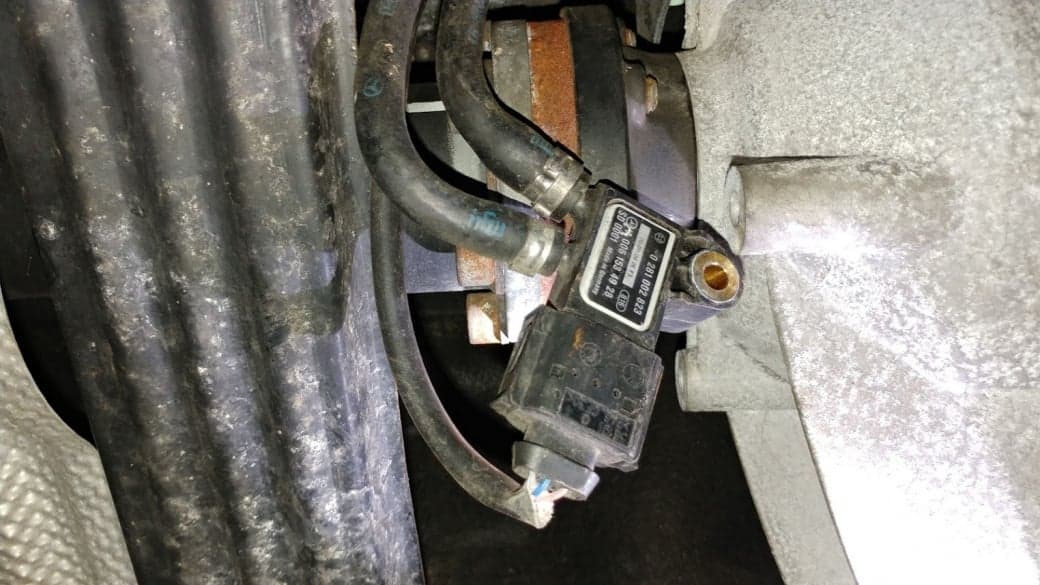

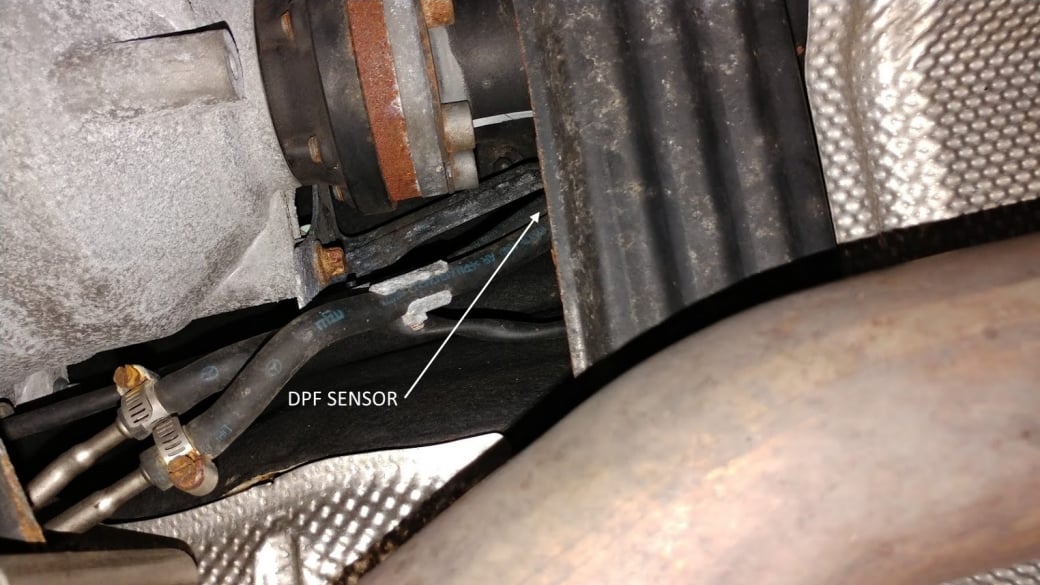 Looking from the driver’s side, you will see the DPF sensor.
Looking from the driver’s side, you will see the DPF sensor.
